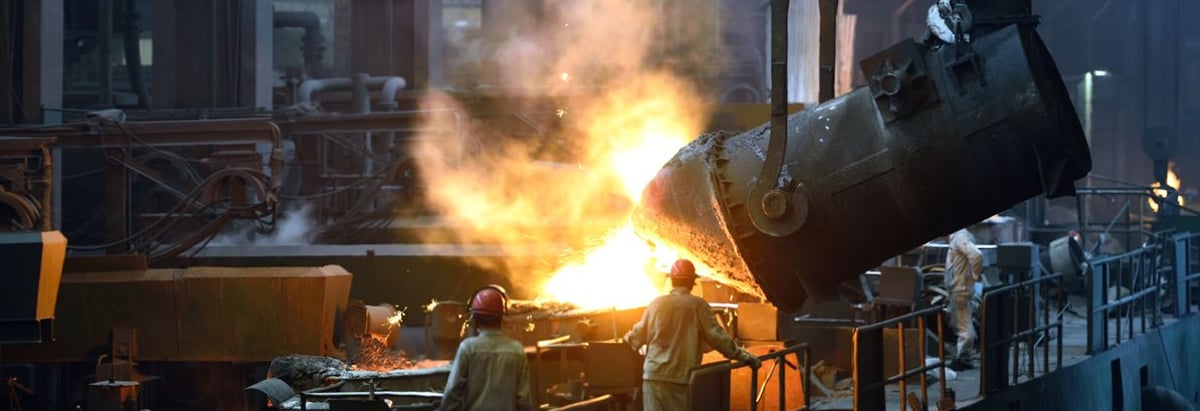Stock Analysis
- South Korea
- /
- Metals and Mining
- /
- KOSE:A092790
Returns On Capital Signal Tricky Times Ahead For NEXTEEL (KRX:092790)

If we want to find a potential multi-bagger, often there are underlying trends that can provide clues. Ideally, a business will show two trends; firstly a growing return on capital employed (ROCE) and secondly, an increasing amount of capital employed. This shows us that it's a compounding machine, able to continually reinvest its earnings back into the business and generate higher returns. However, after investigating NEXTEEL (KRX:092790), we don't think it's current trends fit the mold of a multi-bagger.
Understanding Return On Capital Employed (ROCE)
For those that aren't sure what ROCE is, it measures the amount of pre-tax profits a company can generate from the capital employed in its business. To calculate this metric for NEXTEEL, this is the formula:
Return on Capital Employed = Earnings Before Interest and Tax (EBIT) ÷ (Total Assets - Current Liabilities)
0.16 = ₩85b ÷ (₩678b - ₩150b) (Based on the trailing twelve months to September 2024).
So, NEXTEEL has an ROCE of 16%. On its own, that's a standard return, however it's much better than the 4.4% generated by the Metals and Mining industry.
View our latest analysis for NEXTEEL
Historical performance is a great place to start when researching a stock so above you can see the gauge for NEXTEEL's ROCE against it's prior returns. If you're interested in investigating NEXTEEL's past further, check out this free graph covering NEXTEEL's past earnings, revenue and cash flow.
The Trend Of ROCE
When we looked at the ROCE trend at NEXTEEL, we didn't gain much confidence. Around two years ago the returns on capital were 45%, but since then they've fallen to 16%. Given the business is employing more capital while revenue has slipped, this is a bit concerning. If this were to continue, you might be looking at a company that is trying to reinvest for growth but is actually losing market share since sales haven't increased.
On a side note, NEXTEEL has done well to pay down its current liabilities to 22% of total assets. That could partly explain why the ROCE has dropped. Effectively this means their suppliers or short-term creditors are funding less of the business, which reduces some elements of risk. Some would claim this reduces the business' efficiency at generating ROCE since it is now funding more of the operations with its own money.
The Bottom Line
We're a bit apprehensive about NEXTEEL because despite more capital being deployed in the business, returns on that capital and sales have both fallen. Yet despite these concerning fundamentals, the stock has performed strongly with a 49% return over the last year, so investors appear very optimistic. Regardless, we don't feel too comfortable with the fundamentals so we'd be steering clear of this stock for now.
One more thing: We've identified 5 warning signs with NEXTEEL (at least 2 which don't sit too well with us) , and understanding these would certainly be useful.
While NEXTEEL may not currently earn the highest returns, we've compiled a list of companies that currently earn more than 25% return on equity. Check out this free list here.
Valuation is complex, but we're here to simplify it.
Discover if NEXTEEL might be undervalued or overvalued with our detailed analysis, featuring fair value estimates, potential risks, dividends, insider trades, and its financial condition.
Access Free AnalysisHave feedback on this article? Concerned about the content? Get in touch with us directly. Alternatively, email editorial-team (at) simplywallst.com.
This article by Simply Wall St is general in nature. We provide commentary based on historical data and analyst forecasts only using an unbiased methodology and our articles are not intended to be financial advice. It does not constitute a recommendation to buy or sell any stock, and does not take account of your objectives, or your financial situation. We aim to bring you long-term focused analysis driven by fundamental data. Note that our analysis may not factor in the latest price-sensitive company announcements or qualitative material. Simply Wall St has no position in any stocks mentioned.
About KOSE:A092790
NEXTEEL
Manufactures and sells steel pipes in South Korea and internationally.

